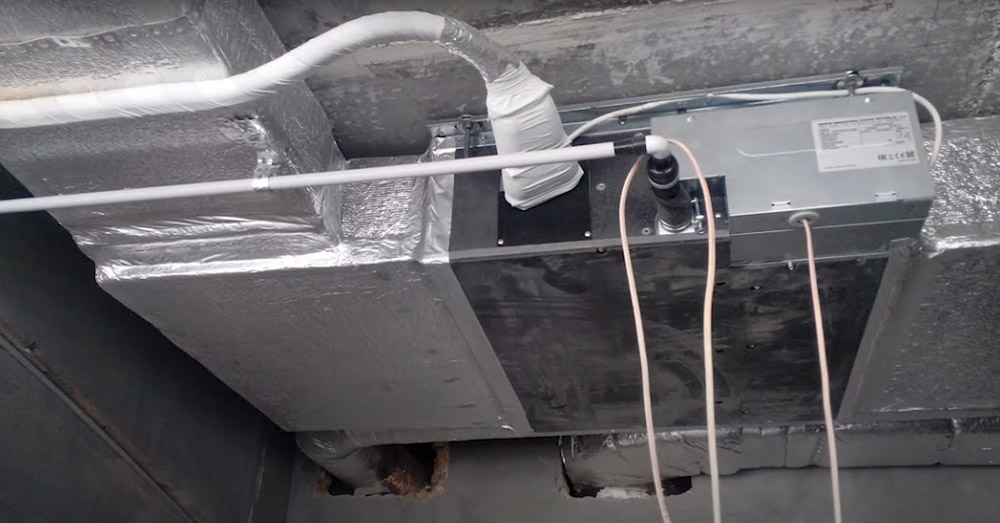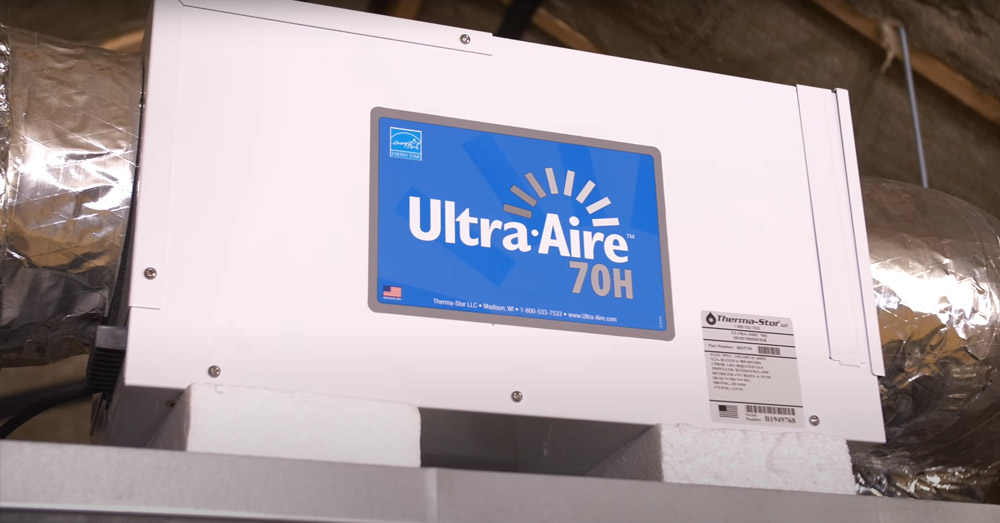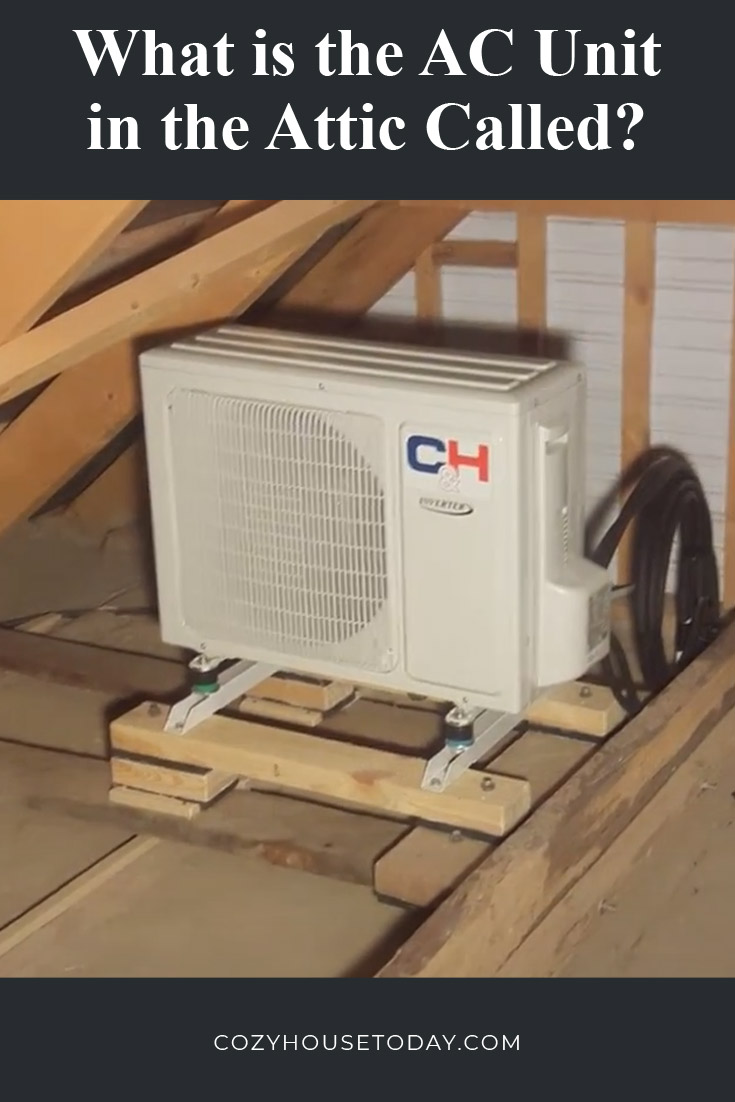
What’s the name of the AC unit in your attic? If you’re not sure, don’t worry – you’re not alone! Many people don’t know the technical names for all of the parts of their homes. In this blog post, we will discuss what an AC unit in the attic is called, as well as some of its common features. We’ll also provide a few tips on how to maintain your AC unit and keep it running smoothly all summer long!
An AC unit in the attic is commonly called a “central air conditioner“. This name can be a little misleading, because the AC unit itself may not be located in the attic. However, the term “central” refers to the fact that this type of AC unit distributes cooled air throughout your home. Central AC units are typically larger than other types of AC units, and they require professional installation.
Central AC units have several common features, including an outdoor compressor, indoor evaporator coils, and a fan belt or blower. The outdoor compressor sits outside your home and pumps refrigerant through the system; the evaporator coils sit inside your home and cool the air, and the fan belt or blower circulates the cooled air throughout your home.
Why is my AC unit in the attic?

There are a few reasons why your AC unit might be in the attic. One common reason is that your home simply doesn’t have enough space for a central AC unit that would sit outside your home. In this case, the AC unit will be located in the attic to save space. Another reason you might find an AC unit in the attic is if your home has a crawlspace or unfinished basement – these areas can be used to house the indoor evaporator coils and fan belt or blower.
If you’re not sure why your AC unit is located in the attic, it’s best to consult with a professional HVAC technician. They will be able to inspect your system and provide you with specific information about why it’s located where it is.
Should you air condition your attic?

Some people choose to air condition their attic to keep the space cooler and more comfortable.
This can be a great option if you live in a hot climate, or if your attic is used as a living space.
However, it’s important to note that air conditioning in your attic will also cool the rest of your home, so you may not need to do this if your central AC unit is already working properly.
What is the difference between split AC and central AC?

There are two main types of AC units – split systems and central systems. Split systems are smaller and more compact, and they typically require professional installation. Central AC units are larger, and they distribute cooled air throughout your home via ductwork.
Split AC units have an outdoor compressor and indoor evaporator coils. The outdoor compressor sits outside your home and pumps refrigerant through the system; the evaporator coils sit inside your home and cool the air. This type of AC unit is a good option if you live in a small or medium-sized home, or if you don’t have enough space for a central AC unit.

Central AC units have an outdoor compressor, indoor evaporator coils, and a fan belt or blower. The outdoor compressor sits outside your home and pumps refrigerant through the system; the evaporator coils sit inside your home and cool the air. This type of AC unit is a good option if you live in a large home, or if you want to distribute cooled air throughout your entire house.
Both split systems and central AC units have their pros and cons, so it’s important to consult with a professional HVAC technician before deciding which type of AC unit is best for your home. They will be able to assess your situation and recommend the best course of action for keeping you cool all summer long!
Can you run ductwork through the attic?
There are a few things to consider before deciding if you can run ductwork through the attic. One thing to keep in mind is the amount of space you have in your attic – if there isn’t enough room for the ducts, it’s not going to be feasible to run them through the space.
Additionally, you’ll need to make sure that the attic is properly insulated and ventilated, as running ductwork through an unheated and unventilated space can lead to problems like moisture buildup and mold growth.

In some cases, running ductwork through the attic can be a great option if you want to cool your attic space, or if you’re having trouble cooling certain parts of your home.
However, it’s important to note that running ductwork through the attic can be difficult and costly.
You should consult with a professional HVAC technician before deciding whether or not this is the right option for you. They will be able to inspect your home and provide you with specific information about whether or not it’s feasible to run ductwork through the attic. They will also be able to recommend the best way to insulate and ventilate your attic so that you can stay cool all summer long!
Do attic AC units have filters?

Just like central AC units and split systems, attic AC units have filters that need to be cleaned regularly. The filters in an attic AC unit protect the coils from dust and dirt, which can cause the system to work less efficiently. It’s important to clean the filters on your attic AC unit at least once a month, or more often if needed.
If you’re not sure how to clean the filters on your attic AC unit, consult with a professional HVAC technician. They will be able to show you how to properly clean the filters so that your system runs smoothly all summer long! Keep Cool This Summer with an Attic AC Unit!
What is the ac unit in the attic called?

The AC unit in the attic is called also a Heat Pump.
A heat pump transfers heat from one place to another and can be used both for heating and cooling. In cold weather, the heat pump extracts warmth from the outside air and delivers it inside. In hot weather, the process is reversed; the pump removes heat from your home and releases it outdoors.
Some newer models of heat pumps also include an electric resistance heater that can provide supplemental heating when temperatures are very low.
Why are AC vents on the floor?

The AC vents on the floor are there to distribute cool air throughout the room. The further away from the vent, you are, the less cooled air you will receive. Ideally, you want to have furniture and other objects that will block or at least deflect airflow away from yourself so that you can stay cooler.
If your home has central AC, likely, your furnace is also in your attic. In this case, your heat pump is functioning as both your heating and cooling system. You may also hear this type of unit referred to as an “HVAC” system, which stands for “heating, ventilation and air conditioning“. Many homes with forced-air heating also have a separate zone for cooling, which uses a different thermostat to control the AC unit. If your home does not have central AC, you will likely need to install a separate window or wall unit to cool your space.

If you are looking for an energy-efficient way to cool your home, consider installing a heat pump. Heat pumps are becoming more and more popular as people become more aware of the benefits they offer. Not only do they save on energy costs, but they also help reduce greenhouse gas emissions. And if you already have a furnace in your attic, upgrading to a heat pump may be a cost-effective way to improve both your comfort and your environmental footprint!
How do I cool my finished attic?

If your attic is finished and you want to use it as a living space, you will need to install an AC unit. The most common type of AC unit for this purpose is a window unit. You can also install a wall unit, but this may be more difficult, depending on the layout of your attic. If you are not comfortable doing the installation yourself, you can hire a contractor to do it for you.
Window units come in both air-conditioning and heat pump models. An air-conditioning unit cools the air and dehumidifies it, while a heat pump also heats the air.
If you live in a climate where winters are cold but summers are hot, it may make sense to choose a heat pump unit, which can be used both for cooling and heating.

Wall units are usually more expensive than window units, but they have the advantage of being less visible. If you are concerned about how your AC unit will look in your home, a wall unit may be a better option for you.
No matter what type of AC unit you choose, make sure it is the correct size for your attic. You want to choose an AC unit that is big enough to cool the space adequately, but not so big that it wastes energy by running constantly. Consult with a professional installer or manufacturer to help you select the right size unit for your attic.
Does opening attic cool house?

There is no definitive answer to this question. Some people believe that opening the attic will help cool the house by allowing cooler air to circulate throughout the space. Others think that it makes little difference and that any benefit you may see is more than offset by the increased energy use.
The best way to find out if opening your attic helps cool your home is to try it! If you live in a climate where temperatures vary significantly from season to season, it may be worth experimenting with different levels of attic ventilation during different times of the year. Keep in mind, though, that if you do decide to open your attic, you will need to make sure the insulation is adequate so that you don’t lose heat in the winter months.
Can I install my own AC unit?

Many people choose to install their own AC unit, either because they are comfortable with DIY projects or because they want to save money on installation costs. If you decide to install your own AC unit, make sure you select a model that is the correct size for your attic. You also want to choose an AC unit that is Energy Star certified, which means it meets certain efficiency standards.
Before installing your new AC unit, be sure to read the manufacturer’s instructions carefully. It is important to follow all of the safety precautions outlined in the instructions, especially when working with electrical wiring. If you are not comfortable doing the installation yourself, you can always hire a contractor to do it for you.
Installing an AC unit can be a challenging project, but it is doable if you are willing to put in the time and effort. With a little bit of planning and preparation, you can have a cool and comfortable attic space in no time!
Maintaining AC unit

Maintaining your AC unit is essential for keeping it running smoothly all summer long. Here are a few tips to help you get started:
- Make sure that the outdoor compressor is clear of any obstructions, such as weeds or bushes. This will ensure that the compressor can operate efficiently and cool your home properly.
- Keep an eye on the fan belt or blower – if it’s loose or worn out, have it replaced by a professional technician. A malfunctioning fan belt or blower can cause your AC unit to work harder than necessary, which can lead to decreased efficiency and increased energy costs.
- Clean the evaporator coils regularly using a coil cleaner (available at most hardware stores). This will help to ensure that the coils remain clean and free of dust, dirt, and other debris.
- Make sure that your home is properly insulated. A well-insulated home will help to keep the cooled air inside, which can result in significant energy savings.
- Check the filters in your home every month and replace them as needed. Dirty filters can impede airflow and reduce the efficiency of your AC unit.
- Make sure that all vents in your home are clear and open so that cooled air can circulate.

Conclusion
Most people know what an AC unit is, but not everyone knows what it’s called. An AC unit is short for an air conditioning unit, and it is the appliance in your home that cools the air. The AC unit in the attic is often referred to as the “attic ac“. This term can be confusing because there is also an AC unit located in the basement. Some people call this the “basement ac.”
If you’re ever unsure which AC unit someone is referring to, just ask! Most people will be happy to explain it to you. And now you’ll know what to call it too! Thanks for reading.
